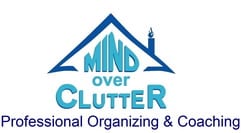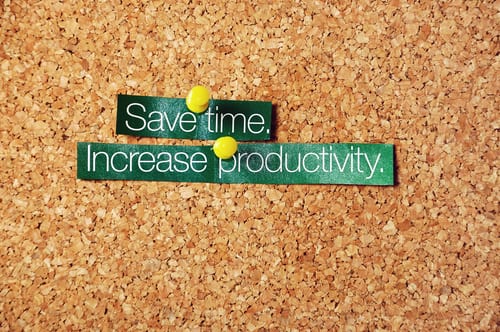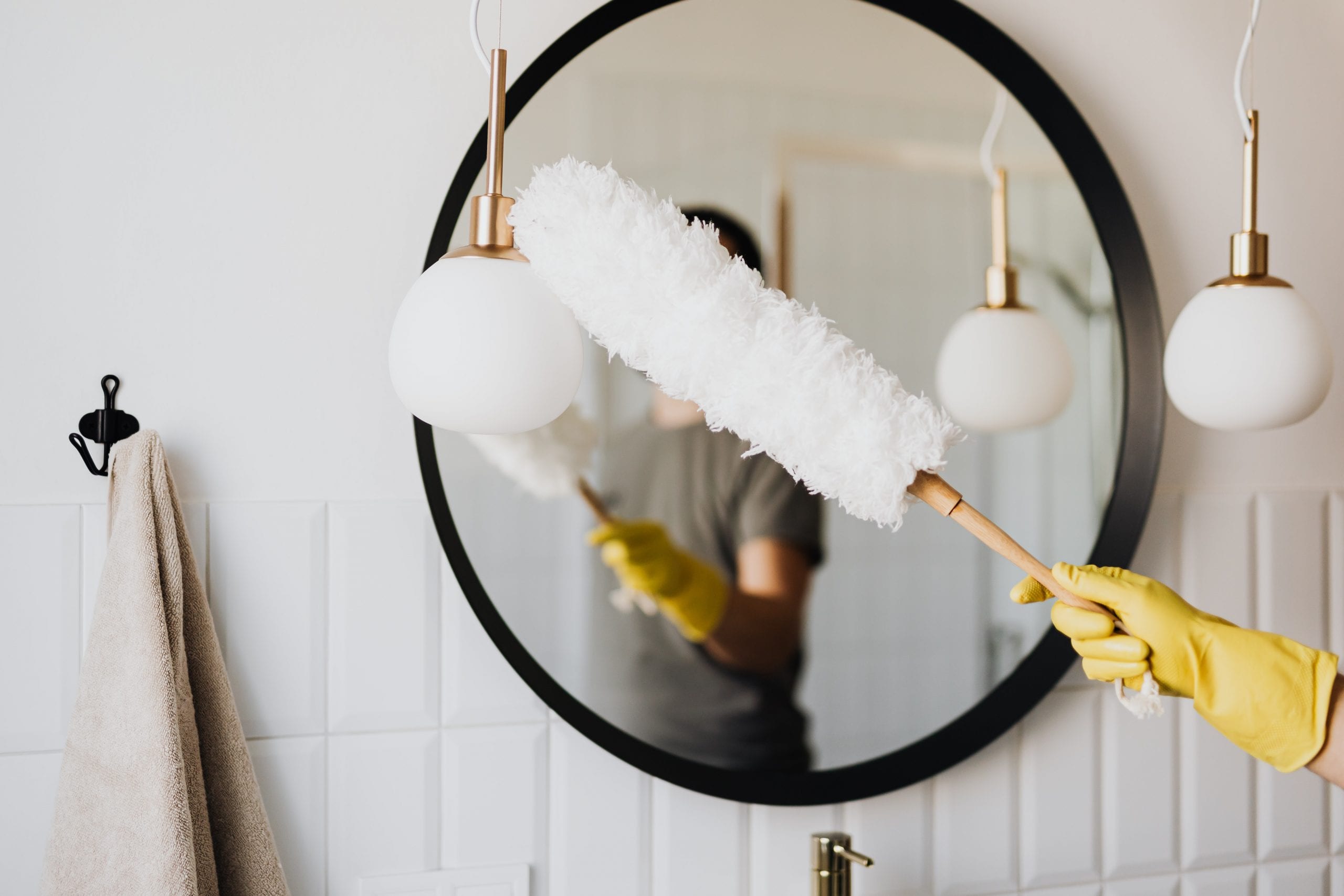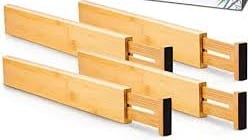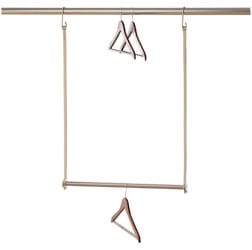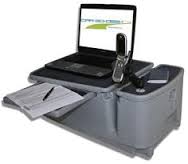Latest Blog Posts
Getting over procrastination takes action. Of course that is easier said than done. Today I’m going to share a simple three-step process with you that will help you get started and get more done than you ever thought possible.
Set a goal
It all starts with a goal. You have to know what it is you want to accomplish. If you don’t know what your goal is, it’s hard to know what you should be doing first or what you should be doing right now to move in the right direction. So what do we do instead? Anything other than the work we know needs to get done.
Your goal is simply to put what you know you need to get done into words. A good goal has defined parameters and a set deadline. It doesn’t have to be complicated. Here’s a simple goal we all strive to accomplish. We have to file our taxes by a specific date. You have a pretty good idea of what paperwork you need, what forms you need to fill out, and where you need to turn them in. You also know what your deadline is. In other words, you have a well-defined goal when it comes to filing your income taxes. And yes, I realized most of us still procrastinate when it comes to this particular task. That’s why the remaining steps are just as important as the first one. For now, I want you to think about one thing you need to get done and turn it into a goal.
Write it down
Write it down. I don’t care if you find a random scrap of paper, use your favourite notebook, or type a note to yourself on your phone. The important part is that you put your goal into writing. This does two things. First of all, it helps you clarify what your goal is. You have to get pretty specific when you try to put what you want or need to do into words. Secondly, writing it down gives you something to look back on. It serves as a reminder and as a tool that you can use when you are tempted to procrastinate.
Set an appointment with yourself
Last but not least, it’s time to get started. That’s often the hardest part, isn’t it? You’re tempted to skip your workout until you lace up your shoes and get started. Once you’re off and running, it’s much easier to keep going. Once you have your goal written down, think about something you can do right now to move you in the right direction. Go do that. Then come back and do something else. Each morning, start by looking at your goal and challenge yourself to take action. Before you know it, you will have made some serious progress. And you’re starting to beat procrastination.
A three-step process to stop procrastinating: set a goal, write it down, schedule time. You can do it Click To Tweet
Need help setting goals? Book a 30-minute complimentary virtual appointment and let me help you get started.
 Julie Stobbe is a Trained Professional Organizer and Lifestyle Organizing Coach who brings happiness to homes and organization to offices, virtually using Zoom. She has been working with clients since 2006 to provide customized organizing solutions to suit their individual needs and situations. She uses her love of teaching to reduce clutter, in your home, office, mind and time. She guides and supports you to be accountable for your time, to complete projects and to reach your goals. If you’re in a difficult transition Julie can coach you to break free of emotional clutter constraining you from living life on your terms. Online courses are available to help instruct, coach and support your organizing projects. Get started by downloading Tips for Reorganizing 9 Rooms.
Julie Stobbe is a Trained Professional Organizer and Lifestyle Organizing Coach who brings happiness to homes and organization to offices, virtually using Zoom. She has been working with clients since 2006 to provide customized organizing solutions to suit their individual needs and situations. She uses her love of teaching to reduce clutter, in your home, office, mind and time. She guides and supports you to be accountable for your time, to complete projects and to reach your goals. If you’re in a difficult transition Julie can coach you to break free of emotional clutter constraining you from living life on your terms. Online courses are available to help instruct, coach and support your organizing projects. Get started by downloading Tips for Reorganizing 9 Rooms.
Contact her at julie@mindoverclutter.ca
Click here to learn more about her online course Create an Organized Home.
Twitter – Facebook – Facebook group Organizing Mind and Space
Carolyn Shannon is my guest blogger today. Her business Venting Creatively helps people to find creative ways to shine a light on their life from a different view. She publishes a magazine called Women of Worth magazine.
Top 10 Productivity Time Killers
Every day countless hours are wasted away due to non-productive activities. Time is money, so when distractions and procrastination set in profitability will decline. A survey conducted by OfficeTime.net has revealed 10 of the biggest time killers. The main offenders that reduce our productivity are:
1. Emails
2. Surfing the net
3. Watching TV
4. Procrastination
5. Meetings
6. Non-business conversations
7. Commuting & travel time
8. Social networking
9. Cell Phones & texting
10. Dealing with red tape
Types of Time Wasting
There are many factors that lead to procrastination. There are a few broad categories that most time wasting falls into.
1. Indecision.
Perfectionists will often struggle with indecision. Some things may never become perfect, and putting too much focus on perfection will mean too much time spent on one job. Splitting the work into smaller tasks is one way to deal with it more effectively.
2. Avoidance.
Fear of being judged can be the main cause of procrastination. It could be fear of failure or even success. Neither of these is something to be ashamed of. Success should be celebrated, and failure is the best way of learning. Think less about what others may think and more about trying your best at the task at hand.
3. Thrill Seeking.
This is when procrastination is justified because the worker likes the thrill of an approaching deadline. If this is the case it is best to move deadlines closer and set personal targets. This still gets you the thrill of working against the clock, while reducing procrastination.
How to Put an End to Time Killers
The first step to battling time killers is to understand and appreciate the amount of time that is being wasted. What is the value of all that lost time? Time wasters will directly affect your career advancement opportunities and reduce the amount of income you could have received. Tracking where your time is spent will allow for efficient time management. Don’t just rely on your memory to remember what you did during the day. Use a system so that you have a written record that can be looked over and analyzed. This could be as simple as creating a timetable on a piece of paper, or utilizing a computer program or app to record your daily activities. Cutting down on time killers is a good start, but there are other strategies that should be used to effectively manage your time:
1. Define your purpose.
You need to know exactly what you want when starting a task. Without a definite purpose, you will lose focus.
2. Smart goal setting.
Choose realistic and specific goals and targets. It should be measurable so you know when it has been completed.
3. Plan on a regular basis.
As factors change, your plan should be adjusted to reflect the reality of the situation.
To truly beat time killers you need to work on your mindset & stick to your plan for the long term.
Which type of Time Waster Are You?
1. Thrill Seekers
They feel they can procrastinate, as they enjoy the feeling of working against a deadline
Tip: constantly set and adjust deadlines so that you still get the adrenaline rush but are using your time more effectively than procrastinating
2. Avoiders
They prefer to procrastinate as a means to avoid being judged. Whether it is a success or a failure
Tip: Success is a good thing and nothing to be ashamed of. Failure is a way to learn and improve. Focus on doing the best job you can and not on what others think.
3. Indecisive people
They are often perfectionists but procrastinate to shift responsibility from themselves
Tip: Not everything has to be perfect so try to take small risks and use your intuition. Mistakes may mean you learn something new. Try to split the task up into more manageable parts.
Need help setting new patterns and mindsets this year contact me. I can work with you virtually to help you become more productive and have time for the things that are important to you.


Contact her at julie@mindoverclutter.ca
Click here to learn more about her online course Create an Organized Home.
Twitter – Facebook – Facebook group Organizing Mind and Space
Welcome to the new year. I hope you have challenges you conquer, joys you share and fun to revitalize yourself.
I am a naturally organized person. It comes very easily to me. Many people find getting and staying organized difficult. You will enjoy reading my guest blogger’s article on how to become neat by Sophia Perry of Arizona Moving Professionals.
Trust me when I tell you that a messy person can learn to be neat. As a former slob who daily transferred a ginormous pile of semi-dirty clothes from bed (when it’s sleep time) to the work desk, and vice versa, I can tell you, you too can transform. I don’t even know how it used to get to the point of having almost the entire content of my wardrobe on the bed. But it did.
And the story doesn’t end there. The most frustrating thing was the laundry. I wash one round. While it dries, the second is being washed. I still haven’t folded the first one, and the second is drying. Soon there is the third round. And the rest of my wardrobe is now clean but wrinkled beyond recognition, on an armchair waiting for something to happen. And when I finally get around to dealing with those mountains of clothes, I end up with a closet so messy that I don’t even know what clothes I have. I wish I could say these were my greatest issues, but… There were also dishes. Technically, the situation was the same as with the laundry. It’s just that I never managed to empty the dishwasher, so new dirty dishes piled up in the sink, and… Well, you get the picture. However, there is help! Much like the 12-step program, here too, there are steps to take to get on the path of tidiness.
1. Designate a place for each and every item you possess.
After a long day at work, believe me, I understand the tiredness. But don’t drop your pants, key, and shoes wherever you see fit and leave them lying there until you need them again. If you know that shoes belong in the hallway, keys on a peg next to the door, and jeans in the closet, go put them there. Repeat every day. It will start feeling normal. It will become an automatic thing.
2. Eyes on the prize – visualize the outcome and work on the road to get there.
To stay motivated, it’s vital to be realistic. Start small. Set a few attainable goals every day, and cross them off the list once you’ve done them. The crossing off will create a feeling of accomplishment and get you incentivized to keep going. It’s like training yourself. In addition to daily plans, start making weekly and monthly plans as well. Put them up on your fridge, so you remind yourself of what needs doing. It will bring some organization to your life.
Motivation can come unexpectedly. For example, once I heard a motivational speaker, whose name I can’t recollect, say: “If your bed is a mess, your life is a mess.” He explained that it’s his morning routine that makes him successful. He gets up, works out, and makes his bed. Making the bed is a task he completed early in the morning. So he set himself up for success. He already accomplished something. Needless to say, I have made a habit of making my bed every morning now.
Set small goals every day and cross them off the list. It will make you feel like you have accomplished something.
3. Stop with the hoarding.
Stop piling up clutter. Having too many things is what complicates the cleaning process. And not just that, too many items to wipe, move, and dust are downright overwhelming. As Marie Kondo says, and I’m paraphrasing – if it doesn’t make you happy, get rid of it. Also, if you haven’t used it for a long time – get rid of it. If you don’t need it – you’ve guessed it, it goes out. Finally, don’t accumulate sentimental knickknacks. Don’t get attached to things. They are just things. Many have fallen into this trap. If you don’t enjoy, need, or use something, lose it. A messy person can learn to be neat if they learn to declutter mercilessly! I have come to despise ornaments with no purpose, just because they add to the cleaning time. And time is precious.
Moreover, clutter can get in the way of productivity. Therefore, tidying up your workspace is very important. This is especially crucial if you work from home. There are already too many distractors. And several dirty coffee mugs, a mountain of clothes on your chair, and dirty socks on the floor are not helpful. Also, too many things on your desk, such as purposeless ornaments, don’t make for a suitable working environment.
Clutter can get in the way of productivity. Keep your workspace tidy and organized.
4. Simplify cleaning.
How can cleaning be simplified, you wonder? Well, simple. Organize your home so that it’s easier to tidy. Decluttering is one way to do it. But you can do more. For instance, I’ve realized that curtains really make my life difficult. So I got rid of them and replaced them with zebra blinds. They are stylish, modern, and, most importantly, easy to maintain. There is no washing, ironing, or hanging. Just an occasional wipe with a wet cloth and a bit of dusting. Good quality ones are antistatic, so even dusting is optional. Think of the areas in your home that cause you the most headaches, and figure out ways to make them more manageable.
5. It all boils down to making new habits.
Make yourself do something, even the smallest thing, every day. Not every week or every few days, but every single day. The point is to make it a habit to keep your home neat and tidy. If tidiness doesn’t come instinctively, you must train yourself. Basically, repeat until it’s a routine. Every time you leave a room, try to leave it better than you found it. Put a thing or two away. As you cook, put dirty dishes in the dishwasher as soon as you are done with them. Wipe the surface the second you spill something. Don’t let things get really filthy. So big cleaning will be less frequent.
If tidying up doesn’t come instinctively to you, make a habit of it.
A messy person can learn to be neat
Some people call it a creative mess. Some say they can only function in chaos. They claim they can’t find anything if their home is tidy. But is it really true? Or are those excuses? Old habits are hard to break, but a messy person can learn to be neat. It’s essential to change self-image. You are not a slob or a lazy person – you need to purge. Rid yourself of clutter and bad habits. Finally, make positive associations with cleaning. Listen to music or an audiobook. That way, an unpleasant, mundane task will become something more enjoyable.
Let me help you to leave your messy self behind. Book a 30-minute complimentary virtual organizing assessment. https://mindoverclutter.as.me/virtualorganizingassessment





Contact her at julie@mindoverclutter.ca
Twitter – Facebook – Facebook group Organizing Mind and Space
Click here to learn more about working with a Professional Organizer?
My guest blogger this month is Laura McHolm, an organizational, moving and storage expert, and co-founder of NorthStar Moving Company. NorthStar Moving Company is an award-winning, “A+” rated company, which specializes in providing eco-luxury moving and storage services.
Many believe that to lead a more organized and inspired life, the clutter around you must be cleared. It’s simple: if your home is organized, your mindset will be too.
A clean and balanced home is actually a launching pad for many other goals and resolutions. So if you’re already starting to fail at some of your other 2021 resolutions, try this home resolution instead: find more space in your home by clearing out the clutter! Follow these ten tips and I promise you it will inspire you to complete your other resolutions and lead you to a more organized and happier year!
Pantries
Create room by removing the large and awkward food packaging. Purchase clear, air-tight containers, take the box of your food item and cut out the product name, nutritional facts and expiration date. Tape them to the inside of your clear container and then seal the food.
Pantry Shelves
Arrange the food on your shelves to help keep your resolutions. Make “first choice” shelves for the food that you want to stay on that diet. Make shelves that are for the kids’ snacks or foods that you’re just not going to have on a regular basis anymore… You get the idea –some shelves are just for the once a week treat. Some are for every day.
Pantry Storage
If you like to buy in bulk, put the bulk of your paper goods in another location, perhaps a closet or the garage, and place only what you need in your pantry— restock as needed. Tape a note to the shelf stating the location of the extra supplies. When you use the last item it will remind you of the location where more are stored.
In the Kitchen
When storing pots, pans and other durable items, stack them on their sides like files. This simple step not only creates more room, it also allows you to see exactly what you need. Caddies or sorters from a shelf or container store have great tools for vertical organizing. Have all this in mind when planning your next kitchen remodelling.
It’s simple: if your home is organized, your mindset will be too. Click To TweetDressers
Place clothing in drawers vertically (not the traditional horizontal piles) because it not only maximizes space, it allows you to find items more quickly. You can purchase wooden planks or plastic planks to use as dividers. This way you can see all of your clothes at once when you open the drawer.
Closets
If your shoes don’t have a place they end up in a pile taking up valuable space. Place shoes and accessories in clear plastic containers so you can see everything and tape their photo to the inside of their container with the photo facing out. This little step gives you triple duty: more space, you can find it easier and better still you can put it away in the exact same spot for the next time that hot date rolls around…
Organize by Color
Organize your closet and drawers from dark to light. It can be a great way to find out that you really have way too many black blouses… and you can keep your resolution of being kinder and gentler by donating the extras!
Kids’ Rooms
Purchase bed raisers for under-the-bed storage. Make sure they are sturdy and the bed can’t be knocked off the raisers during a game of hide and seek. You can also purchase under the bed drawers. You can store everything from shoes, laundry basket, books and any bulky items that might otherwise clutter their room.
A Baby’s Closet
Is there room to add another bar? Take advantage of the fact that baby clothing is smaller and if you can, add an additional bar to hang the clothing to maximize space. You can purchase pre-made closet organizers that you can customize to make the most out of your baby’s closet.
The best trick to more space in your home is less is more! So if you find you have extra things laying around, throw a reverse housewarming party! You’ll be starting a new party trend. Set aside your unwanted items and instead of having your friends bring a housewarming gift, they are to pick one of your items and take it home with them. This is a great way to reunite with friends, find your unwanted things a good home, and de-clutter all at the same time!
Originally posted on porch.com
If you need help implementing these suggestions book a complimentary 30-minute virtual appointment.
Julie Stobbe is a Trained Professional Organizer and Lifestyle Organizing Coach who brings happiness to homes and organization to offices, in person and virtually. She has been working with clients since 2006 to provide customized organizing solutions to suit their individual needs and situation. She uses her love of physical activity to reduce clutter, in your home and office. She guides and supports you to manage your time. If you’re in a difficult transition Julie can coach you to break-free of emotional clutter constraining you from living life on your terms. Online courses are available to help instruct, coach and support your organizing projects. Get started by downloading Tips for Reorganizing 9 Rooms.
Contact her at julie@mindoverclutter.ca
Click here to learn more about her online course Create an Organized Home.
Twitter – Facebook – Facebook group Organizing Mind and Space
Reading time – 3 minutes
Being organized is not about being perfect.
Anyone can learn to be more organized. It is a set of skills that can be taught. Organization creates efficiency and effectiveness, making your life and surroundings perform optimally for you. When you start organizing remember these tips:
- Accept your limitations on time, space, energy and money
- Be consistent, do a little at a time on an on-going basis
- Acknowledge your successes. Success breeds success motivating you to do more.
- Take it one day at a time
How do I decide where to start?
I tell my clients:
- to start with the space that is bothering them the most.
- sometimes you may need to start in an area of your home that you are going to use for storage. Organizing that space first will give you more places to store items that need to be removed from other rooms.
How do I start?
Get some boxes and bags for :
- garbage
- recycling
- things to go to other rooms – put them in a container and take them after you are done working in the space your are organizing. If you leave the room you might never return
- things to be returned to other people – put them in a container and return them to the correct owner after you organizing time is over.
- don’t buy organizing products – wait until you know what you are storing, where you are storing it, and how much you have to store. Then you can the best container to hold the items.
How to I get the room looking nice?
There are 5 steps to follow:
Step 1 Sort
Sort everything in the room into categories. The categories depend on what is in the room. You might have:
- electronics
- books
- tools
- computer items
- dishes
- food categories
- cosmetics
- paper supplies
Figure out the categories of things you have in your room and sort the things you can see and then work in the drawers and cupboards
Step 2 Part with items
Part with items you no longer need and donate them to charity
Step 3 Assign a home
Find the best place to store the item , close to where you use them and so you access them easily. Things you don’t use very often can be stored further away and in less accessible places.
Step 4 Containers
Now is the time to get the right container to store the items. Anything can be a container:
- boxes
- wine boxes cut in half
- magazine holders
- jars
- tins
- plastic bins
- bags
Step 5 Evaluate
Use your system and then see:
- if you have things stored in the best locations
- is it easy to get it out and put it away
- does everything have a “home”Being organized is not about being perfect. Anyone can learn to be more organized. It is a set of skills that can be taught. Click To Tweet


How do I remember all this?
Easy it spells SPACE
S – sort
P– Part with items
A – Assign a home
C – Containerize
E – Evaluate
If you need some help with your organizing book a 50 minute break through organizing session . Click on the link to book your complimentary appointment, and speak with me to get helpful tips to get you unstuck. Organizing Break Through session


Contact her at julie@mindoverclutter.ca
Click here to learn more about her online course Create an Organized Home.
Twitter – Facebook – Facebook group Organizing Mind and Space
Why don’t I want to do it now?
Is it boring?
- Do it anyway and consider the consequence if you don’t do it.
Overwhelming?
- Break it into smaller parts and do one or several parts at a time
Do I only have small blocks of time available but want to do everything from start to finish?
- Change your mindset and make it a positive idea. Small blocks of time mean you only need to do a small amount of work
Am I tired?
- Be aware of your circadian rhythms. Each of us peaks at different hours of the day. Before and after lunch is usually a good time to catch up on mundane activities
Do I fear failure or that it won’t turn out perfectly?
- Fear of losing things,
- forgetting things
- not finishing things or
- doing the wrong thing can generate a lack of action.
How to be Successful
1. If you are easily distracted keep only one project on your desk at a time.
2. Give yourself a time span to complete a project and don’t let your mind wander from the task. Set a timer. When it goes off you change what you are doing or take a break and come back to the same task.
3. Try setting small goals and giving yourself rewards, a coffee, a walk, 15 minutes on Facebook, calling a friend etc
4. Think of how you will feel when the task is completed, pride, relief, satisfaction
There are more great ideas in a book titled “Don’t Agonize Organize Your Office” by Diane A Hatcher
Join Organizing Mind and Space to help you become intentional about getting things done.





Contact her at julie@mindoverclutter.ca
Click here to learn more about her online course Create an Organized Home.
Twitter – Facebook – Facebook group Organizing Mind and Space
Carolyn Shannon is my guest blogger today. Her business Venting Creatively helps people to find creative ways to shine a light on their life from a different view. She publishes a magazine called Women of Worth magazine.
Top 10 Productivity Time Killers
Every day countless hours are wasted away due to non-productive activities. Time is money, so when distractions and procrastination set in profitability will decline. A survey conducted by OfficeTime.net has revealed 10 of the biggest time killers. The main offenders that reduce our productivity are:
1. Emails
2. Surfing the net
3. Watching TV
4. Procrastination
5. Meetings
6. Non-business conversations
7. Commuting & travel time
8. Social networking
9. Cell Phones & texting
10. Dealing with red tape
Types of Time Wasting
There are many factors that lead to procrastination. There are a few broad categories that most time wasting falls into.
1. Indecision.
Perfectionists will often struggle with indecision. Some things may never become perfect, and putting too much focus on perfection will mean too much time spent on one job. Splitting the work into smaller tasks is one way to deal with it more effectively.
2. Avoidance.
Fear of being judged can be the main cause of procrastination. It could be fear of failure or even success. Neither of these is something to be ashamed of. Success should be celebrated, and failure is the best way of learning. Think less about what others may think and more about trying your best at the task at hand.
3. Thrill Seeking.
This is when procrastination is justified because the worker likes the thrill of an approaching deadline. If this is the case it is best to move deadlines closer and set personal targets. This still gets you the thrill of working against the clock, while reducing procrastination.
How to Put an End to Time Killers
The first step to battling time killers is to understand and appreciate the amount of time that is being wasted. What is the value of all that lost time? Time wasters will directly affect your career advancement opportunities and reduce the amount of income you could have received. Tracking where your time is spent will allow for efficient time management. Don’t just rely on your memory to remember what you did during the day. Use a system so that you have a written record that can be looked over and analyzed. This could be as simple as creating a timetable on a piece of paper, or utilizing a computer program or app to record your daily activities. Cutting down on time killers is a good start, but there are other strategies that should be used to effectively manage your time:
1. Define your purpose.
You need to know exactly what you want when starting a task. Without a definite purpose, you will lose focus.
2. Smart goal setting.
Choose realistic and specific goals and targets. It should be measurable so you know when it has been completed.
3. Plan on a regular basis.
As factors change, your plan should be adjusted to reflect the reality of the situation.
To truly beat time killers you need to work on your mindset & stick to your plan for the long term.
Which type of Time Waster Are You?
1. Thrill Seekers
They feel they can procrastinate, as they enjoy the feeling of working against a deadline
Tip: constantly set and adjust deadlines so that you still get the adrenaline rush but are using your time more effectively than procrastinating
2. Avoiders
They prefer to procrastinate as a means to avoid being judged. Whether it is a success or a failure
Tip: Success is a good thing and nothing to be ashamed of. Failure is a way to learn and improve. Focus on doing the best job you can and not on what others think.
3. Indecisive people
They are often perfectionists but procrastinate to shift responsibility from themselves
Tip: Not everything has to be perfect so try to take small risks and use your intuition. Mistakes may mean you learn something new. Try to split the task up into more manageable parts.
Need help setting new patterns and mindsets this year contact me. I can work with you virtually to help you become more productive and have time for the things that are important to you.


Contact her at julie@mindoverclutter.ca
Click here to learn more about her online course Create an Organized Home.
Twitter – Facebook – Facebook group Organizing Mind and Space
Do you want your desk to say you are a leader, hard worker, and creative? Could your desk say that you are messy, boring, and behind the times? Let your workspace be your business card. You may have a physical office or a portable office, organize it to suit your needs so you can work efficiently, and show your clients that you are knowledgeable and a leader in your field.
Technology
Use technology that helps you accomplish your business. Having state of the art technology that you don’t understand and can’t use competently or having outdated technology will give your clients the wrong impression. Purchase the technology that is right for you and your budget. Don’t fall into the trap of buying technology that is more powerful than you need to make a “good” impression. Clients may feel like you are showing off. Show your clients that you are knowledgeable, prepared appropriately and ready to lead them through the task at hand.
Desk Photo / Screen Saver
Use a photo that lets your clients learn something new about you. Make yourself memorable to your clients. Make sure it is in good taste, you want to make a professional impression on your potential clients. Be authentic, not boring. An interesting screen saver on your laptop will have the same effect.
Business Cards
Have them close at hand so you can give them out at the appropriate time. You don’t want people to take them because they feel obligated, you want them to have them because they are interested in you. Make sure your business card is professionally designed. If you want to show you are a leader don’t use the free sites. Make sure they are readable, scannable, classic and interesting. Good supplies show that you value quality and do quality work.
Piles on Your Desk / Piles of Paper in your Bag
This relates to your organizing style. Too many piles gives the impression you are behind in your work and may not be able to help your clients in a timely manner. The perfect office will make some clients feel uncomfortable because they will feel like they are not good enough to work with you. Determine how you function best, piles, filing cabinets, trays, desktoppers. Remember to keep loose papers neatly piled or stored in the way that works best for you. Lead by example, if you are prepared to work then others follow your work ethic making it easier to accomplish the job on time.
Lighting
When you enter your office is it dark and stark or bright and light? What does that say about you? I don’t care, I don’t notice details or I am open and I want you to be comfortable. Adding lighting to your office can make the space more inviting, and interesting and make it easier for clients to read information. If you are dealing with an older population eyesight can be declining. Good lighting makes it easier for them to engage with the information. The more ways you show your clients you understand their needs the more likely they are to trust that you are an expert.
Books
Keep up with popular books in your industry, even if you don’t find them interesting. Your clients may ask you about them. You want to be able to make a comment that helps them to understand the value of the book or article. You can also display a few books to show your clients that you have diverse interests in intriguing topics. It shows them that you like to expand your knowledge. Leaders develop many skills not just the ones directly related to their business. Skills and knowledge learned from others make you a better leader.
Pictures on the Wall
Displaying your certification and education reassures clients of your expertise. But a wall full of outdated certificates may not give the best impression. Have a couple that shows your current accomplishments. You want your clients to know you value education and keeping current is important.
Try to Avoid
- Leaving your unfinished lunch on display
- Having your desk cluttered with staplers, pens, tape dispensers, post-it notes, etc. Keep them in your desk drawer or in a box. Have your desk say that you are a leader and expert.
- Silly objects, you are trying to show your clients that you are a leader, not the funny one.


Contact her at julie@mindoverclutter.ca
Click here to learn more about her online course Create an Organized Home.
Twitter – Facebook – Facebook group Organizing Mind and Space
